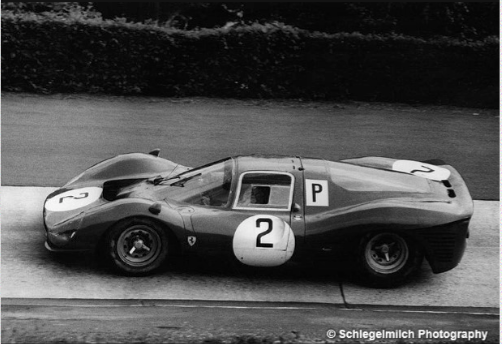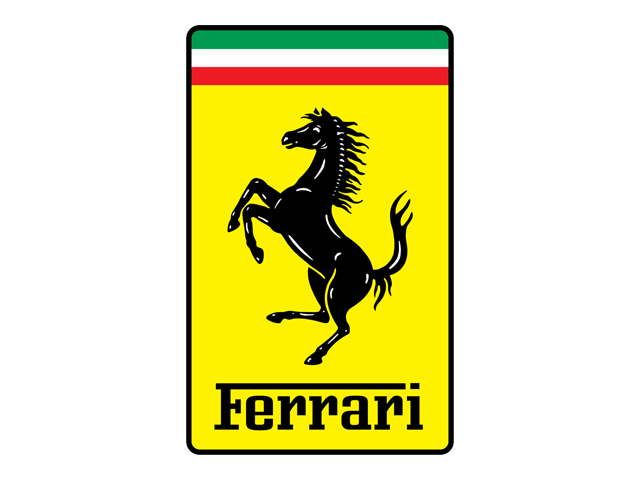1966 Ferrari 330 P3/4 Berlinetta

The descriptions of the Classic Cars in the Directory were partly generated or supplemented with the help of artificial intelligence (AI). The content may occasionally not always be entirely accurate or factually correct despite careful checking.
The Ferrari 330 P3/4 Berlinetta 1966 is a legendary race car that epitomizes the pinnacle of Italian automotive craftsmanship and engineering excellence from the golden age of motorsport. This car was designed to compete in the World Sportscar Championship and the 24 Hours of Le Mans race with the aim of dethroning Ford and Porsche at the height of their dominance in endurance racing.
The Ferrari 330 P3/4 Berlinetta 1966 boasts a breathtakingly beautiful aerodynamic design that is both sleek and aggressive. The bodywork was crafted from hand-beaten aluminum panels that were expertly shaped to minimize drag and maximize downforce. The front grille was designed with large air intakes to provide ample cooling for the engine and optimize air flow to the rear diffuser. The car's livery, a striking shade of bright red with white and blue accents, is instantly recognizable as a Ferrari classic.
Under the hood of the Ferrari 330 P3/4 Berlinetta 1966 is a powerful 4.0-liter V12 engine that produces 420 horsepower at 8,400 rpm. This engine was derived from the legendary 250 GTO and modified to deliver more power and torque. The V12 is paired with a five-speed manual gearbox that powers the rear wheels. The car can accelerate from 0 to 60 mph in just 5.5 seconds and has a top speed of 196 mph.
The Ferrari 330 P3/4 Berlinetta 1966 features an advanced suspension system that was developed specifically for endurance racing. The car has independent suspension with double wishbones at the front and a de Dion rear axle. The shock absorbers were adjustable, allowing for fine-tuning of the suspension to optimize traction and handling on different types of tracks. The car's braking system uses ventilated discs all around and is highly effective at scrubbing off speed.
Inside the Ferrari 330 P3/4 Berlinetta 1966, the focus is solely on the driver. The car has a minimalist dashboard that contains only the essential gauges and switches. The steering wheel is a beautiful wooden Nardi piece, and the driver's seat is a snug bucket seat that hugs the body tightly. The car's cabin is spartan and noisy, with the sound of the engine and exhaust filling the air.
Overall, the Ferrari 330 P3/4 Berlinetta 1966 is a masterpiece of automotive engineering that is as beguiling today as it was 50 years ago. Every aspect of the car's design, from the aerodynamics to the engine, suspension, and brakes, was finely calibrated to deliver the ultimate driving experience on the racetrack. This car is a testament to the genius of Enzo Ferrari and the dedication of his engineers and designers who made it possible.
Milestones
- Development of the Ferrari P3 prototype began in late 1965 - The 330 P3 debuted at the 1966 Daytona 24 Hours, finishing second - The 330 P3 won at the 1,000 km of Monza and the 1,000 km of Spa in 1966 - The P3's most famous victory came at the 1966 24 Hours of Le Mans, where it took first and second place - Ferrari later developed the 330 P4, which was very similar to the P3 but had larger displacement and slightly different bodywork - The P4 won its debut race at the 1967 24 Hours of Daytona and then also won the 1000 km of Monza and the 1000 km of Spa - The P4 did not repeat the P3's success at Le Mans, with both P4s retiring early in the 1967 race - The P4's final race was at the BOAC 500 at Brands Hatch, where one car was damaged and the other withdrew due to gearbox issuesTechnical
• Engine: Colombo V12 4.0 litre, naturally aspirated • Horsepower: 416 hp • Transmission: 5-speed manual • Top speed: 186 mph • 0-60 mph in 5.4 seconds • Chassis: tubular steel frame with lightweight aluminium panels • Suspension: Independent front and rear with coil springs and telescopic dampers • Brakes: Disc brakes • Steering: Rack and pinion • Weight: 880 kg • Length: 4365 mm • Width: 1790 mm • Height: 962 mm • Wheelbase: 2400 mm • Fuel capacity: 120 litres • Production number: 3 (only three models built) • Racing history: Won the 1966 Monza 1000 KM, and finished second in the 1967 24 Hours of Le Mans.